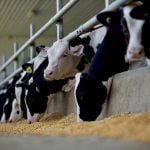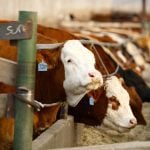
Features

Alfalfa seed production
Growing alfalfa for seed can require intensive management, but can be rewarding. Learn the basics of alfalfa seed production

Swede Midge: a potential ‘perfect storm’
There’s a new canola pest in town. It’s hard to spot and hard to control, but the damage it causes is easy to detect
Cover crop buffet feeds microbes
Peace farmer Bill Gaugler is adding a cover crop to his farm’s rotation, in hopes of increasing yields with less fertilizer

Cover crops increase profitability
Panelists shared cover crop success stories at the Commodity Classic conference in San Antonio

Leafcutter bee production
Many alfalfa seed growers raise their own leafcutter bees to pollinate their crops and earn some extra cash

Controlled traffic farming
As machinery gets bigger, that extra weight seems to take a toll on crop growth. Controlled traffic farming may offer a solution

Alternaria dust no cause for concern

Watch for sunflower diseases
Farmers interested in planting sunflowers in 2014 should be ready to protect them from sclerotinia head rot and sunflower rust

Up and coming pea varieties
Seeding with thousand kernel rates
Agronomists promote using thousand kernel rates to calculate seeding rates. But many farmers still haven’t picked up the habit


